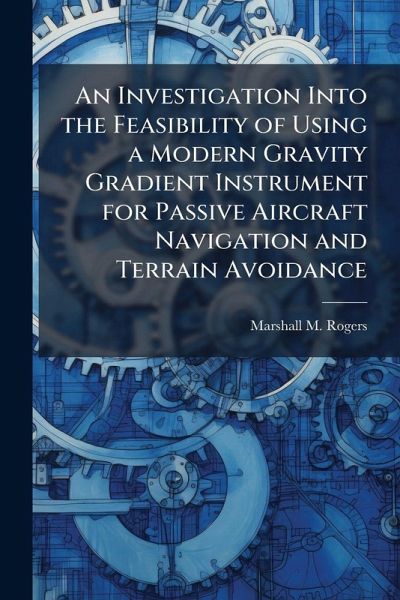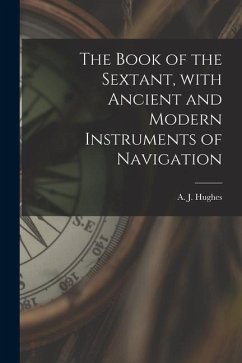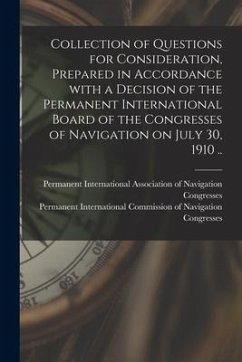
An Investigation Into the Feasibility of Using a Modern Gravity Gradient Instrument for Passive Aircraft Navigation and Terrain Avoidance
Versandkostenfrei!
Versandfertig in über 4 Wochen
18,99 €
inkl. MwSt.
Weitere Ausgaben:

PAYBACK Punkte
9 °P sammeln!
Recently, Gravity Gradient Instruments (GGIs) - devices which measure the spatial derivatives of gravity, have improved remarkably due to development of accelerometer technologies. Specialized GGIs are currently flown on aircraft for geological purposes in the mining industries. As such, gravity gradient data is recorded in flight and detailed gradient maps are created after post mission processing. These maps, if stored in a database onboard an aircraft and combined with a GGI, form the basis for a covert navigation system using a map matching process. This system is completely passive and es...
Recently, Gravity Gradient Instruments (GGIs) - devices which measure the spatial derivatives of gravity, have improved remarkably due to development of accelerometer technologies. Specialized GGIs are currently flown on aircraft for geological purposes in the mining industries. As such, gravity gradient data is recorded in flight and detailed gradient maps are created after post mission processing. These maps, if stored in a database onboard an aircraft and combined with a GGI, form the basis for a covert navigation system using a map matching process. This system is completely passive and essentially unjammable. To determine feasibility of this method, a GGI sensor model was developed to investigate signal levels at representative flight conditions. Aircraft trajectories were simulated over modeled gravity gradient maps to determine the utility of flying modern GGIs in the roles of navigation and terrain avoidance. This work has been selected by scholars as being culturally important, and is part of the knowledge base of civilization as we know it. This work was reproduced from the original artifact, and remains as true to the original work as possible. Therefore, you will see the original copyright references, library stamps (as most of these works have been housed in our most important libraries around the world), and other notations in the work. This work is in the public domain in the United States of America, and possibly other nations. Within the United States, you may freely copy and distribute this work, as no entity (individual or corporate) has a copyright on the body of the work. As a reproduction of a historical artifact, this work may contain missing or blurred pages, poor pictures, errant marks, etc. Scholars believe, and we concur, that this work is important enough to be preserved, reproduced, and made generally available to the public. We appreciate your support of the preservation process, and thank you for being an important part of keeping this knowledge alive and relevant.





![The Commercial Feasibility of the Electric Smelting of Iron Ores in B. C. [microform] Cover The Commercial Feasibility of the Electric Smelting of Iron Ores in B. C. [microform]](https://bilder.buecher.de/produkte/66/66118/66118820n.jpg)


![A Concise View of the Inland Navigation of the Canadian Provinces [microform]: the Improvements Already Effected, and the Inferences to Be Drawn From Cover A Concise View of the Inland Navigation of the Canadian Provinces [microform]: the Improvements Already Effected, and the Inferences to Be Drawn From](https://bilder.buecher.de/produkte/65/65575/65575376n.jpg)

![Letter to the Honourable the Secretary of State [i.e. J.C. Aikins] From the Canal Commissioners, Respecting the Improvement of the Inland Navigation o Cover Letter to the Honourable the Secretary of State [i.e. J.C. Aikins] From the Canal Commissioners, Respecting the Improvement of the Inland Navigation o](https://bilder.buecher.de/produkte/65/65628/65628046n.jpg)
![The History of North Atlantic Steam Navigation [microform]: With Some Account of Early Ships and Shipowners Cover The History of North Atlantic Steam Navigation [microform]: With Some Account of Early Ships and Shipowners](https://bilder.buecher.de/produkte/65/65634/65634467n.jpg)
![Glimpses of Nature's Beauty [microform]: a Guide to the Routes and Connections of the Richelieu and Ontario Navigation Company Cover Glimpses of Nature's Beauty [microform]: a Guide to the Routes and Connections of the Richelieu and Ontario Navigation Company](https://bilder.buecher.de/produkte/66/66113/66113981n.jpg)